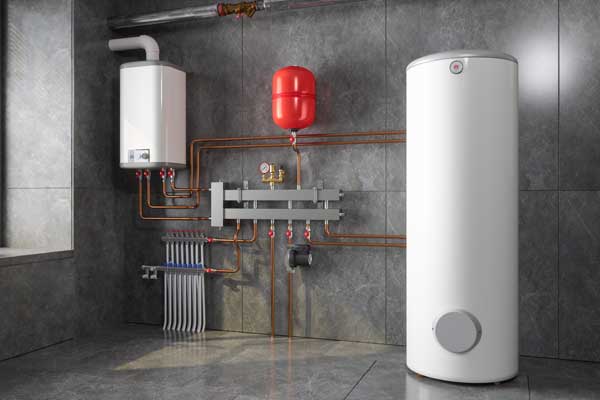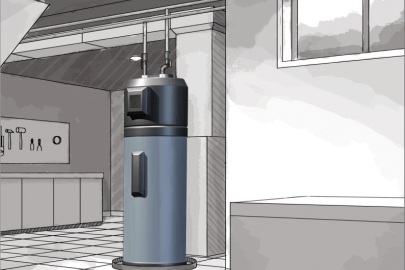Everyone seems to have their private assumption involving What Kind of Maintenance Do Water Heaters Need?.

Hot water is crucial for everyday convenience, whether it's for a revitalizing shower or cleaning dishes. To ensure your warm water system runs successfully and lasts longer, routine upkeep is essential. This short article offers useful pointers and insights on exactly how to keep your home's hot water system to prevent interruptions and expensive fixings.
Introduction
Maintaining your home's hot water system may appear daunting, but with a couple of simple steps, you can guarantee it runs smoothly for many years to come. This guide covers every little thing from understanding your hot water system to do it yourself maintenance suggestions and knowing when to hire specialist aid.
Importance of Keeping Your Warm Water System
Regular maintenance not just extends the life-span of your warm water system but also ensures it operates effectively. Disregarding maintenance can lead to decreased effectiveness, greater power bills, and even premature failure of the system.
Signs Your Warm Water System Needs Upkeep
Knowing when your warm water system requires attention can protect against significant concerns. Keep an eye out for indicators such as inconsistent water temperature level, odd noises from the heating system, or rustic water.
Purging the Hot Water Heater
Flushing your water heater removes debris build-up, boosting performance and lengthening its life.
Checking and Changing Anode Rods
Anode rods protect against rust inside the tank. Examining and replacing them when worn out is essential.
Complex Concerns Calling For Expert Assistance
Instances include major leakages, electric issues, or if your hot water heater is constantly underperforming.
Routine Professional Upkeep Benefits
Expert upkeep can include complete inspections, tune-ups, and guaranteeing compliance with safety standards.
Examining and Changing Temperature Settings
Adjusting the temperature level settings ensures optimum performance and security.
Do It Yourself Tips for Upkeep
You can execute numerous maintenance jobs yourself to maintain your hot water system in leading problem.
Looking for Leakages
Regularly inspect pipelines and links for leaks, as these can result in water damage and higher expenses.
Recognizing Your Hot Water System
Prior to diving into upkeep tasks, it's helpful to comprehend the basic elements of your hot water system. Normally, this consists of the water heater itself, pipelines, anode poles, and temperature controls.
Month-to-month Maintenance Tasks
Routine monthly checks can aid capture minor problems prior to they escalate.
Checking Stress Relief Valves
Checking the pressure relief valve guarantees it functions properly and protects against extreme pressure buildup.
Shielding Pipes
Insulating hot water pipelines reduces warm loss and can conserve power.
When to Call a Professional
While DIY upkeep is beneficial, some problems need specialist knowledge.
Verdict
Routine upkeep of your home's warm water system is essential for performance, durability, and cost financial savings. By complying with these ideas and recognizing when to seek expert help, you can guarantee a reliable supply of warm water without unexpected disturbances.
Water Heater Maintenance: The Basics
Maintaining your water heater will ensure it operates efficiently and has a longer lifespan. Neglecting regular maintenance can lead to costly repairs and an even bigger chunk of your savings if you have to replace it sooner than necessary. But there’s good news: Most water heater maintenance tasks are relatively simple and easy for homeowners with basic DIY skills.
Flush the Water Heater
Over time, sediment and minerals can build up in the tank, reducing its efficiency and potentially causing damage. To flush the tank, turn off the power or gas supply, attach a hose to the drain valve near the bottom and open the valve to drain the water until it runs clear. Ideally, flush the tank annually.
Replace the Anode Rod
The anode rod is a sacrificial metal rod that helps prevent corrosion inside the tank. Inspect and replace it every three to five years or per the manufacturer's recommendation. To replace the anode rod, turn off the power or gas supply, drain a few gallons of water from the tank, unscrew the old rod and replace it with a new one. If the anode rod is significantly corroded or covered in calcium buildup, it's a sign the water heater may need to be replaced soon.
Tune-Up
A yearly tune-up can help identify potential issues and ensure your water heater operates at peak efficiency. This typically involves checking the thermostat, burner assembly (for gas heaters) and any other components specified by the manufacturer. During a tune-up, the technician may also clean the burner and adjust the pilot light (for gas heaters) or examine the heating elements (for electric heaters).
How to Maintain Your Water Heater
Insulate the tank. Insulating the tank can improve energy efficiency and reduce heat loss, saving you money on energy bills. You can purchase precut insulation blankets designed specifically for water heaters or use standard fiberglass insulation wrapped securely around the tank. Check the temperature. The recommended water temperature for most households is around 120 degrees Fahrenheit (49 degrees Celsius). Higher temperatures can increase energy costs and potentially cause scalding. Use a kitchen thermometer to check the temperature at the faucet nearest the water heater. Monitor water pressure. Excessive water pressure can strain the water heater and cause leaks or even tank failure. Install a pressure-reducing valve if necessary. The ideal water pressure range is between 60 and 70 PSI (pounds per square inch). Test the temperature and pressure (T&P) relief valve. The T&P relief valve is a safety feature that releases pressure if the tank gets too hot or the pressure builds up too high. Test it annually by lifting the lever and allowing a small amount of water to release. Replace the valve if it doesn't release water or reseal properly. Check for leaks. Regularly inspect the tank, pipes and fittings for leaks or corrosion. Deal with issues promptly to prevent further damage. Even a small leak can lead to significant water damage over time. Consider a tankless water heater. If your traditional tank-style water heater is nearing the end of its lifespan ( typically 10 years), consider replacing it with a tankless water heater. These units heat water on demand, reducing standby energy losses and potentially saving you money on your energy bills. Schedule professional maintenance. While homeowners can perform many water heater maintenance tasks, it's still a good idea to schedule professional maintenance every few years. A plumber or HVAC technician can thoroughly inspect the unit, identify potential issues and ensure it operates safely and efficiently. https://www.homeserve.com/en-us/blog/home-improvement/hot-water-heater-maintanence/

Do you like reading up on Tips For Maintaining Your Hot Water Heater? Give a remark down below. We would be pleased to find out your feelings about this blog entry. Hoping to see you back again in the near future. Sharing is nice. Helping others is fun. Thanks a bunch for your time. Please come visit our blog back soon.
Schedule Estimate